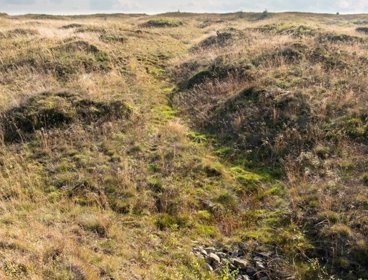By Rebecca Whittle, Lancaster University
Like many of the best ideas, the possibility of combining craft and geography snuck up on me gradually. So much so that, when I first actively saw the connection, my initial feelings of surprise were followed almost immediately by another, quieter voice that said “oh yes, of course…”
Let me explain: my professional training is as a geographer but I’m also a knitter. When I started knitting, I was clear that this was not geography. I was going through a rocky patch and I just needed some people to hang out with and the therapeutic action of using my hands to create things. Yet, as the craft worked its magic and I began to mend, I realised that many of the conversations we were having at ‘knit nights’ had more than a hint of geography to them.
As many indigenous cultures have always known, any form of crafting is a process of cultivating relationships between ourselves, the world around us and the beings that we share it with. Working an item slowly with your hands is like a moving meditation: you start to really notice the properties of the materials that you are working with and this, in turn, invites questions about how they came into your hands, what kind of life they had and how this shapes how they – and you – show up in this moment. Asking questions in this way can be a form of activism as Sarah Corbett’s work on ‘craftivism’ shows.
Inspired by these and many other influences, we held our first ever Crafternoon for Sustainability for the ESRC Festival of Social Science on Zoom in November 2020 (you can watch the event which is in two parts, here and here). With the country deep into lockdown #2 and craft proving more important than ever in sustaining people’s sense of community and wellbeing, we set up three fabulous speakers, organised some related music and video contributions and invited everyone to bring their craft creations to work on while we talked. Using ideas of relationship and reciprocity from Robin Wall Kimmerer’s Braiding Sweetgrass, we explored how making, mending and working with our hands can bring us into a more respectful relationship with the people and places that we share the planet with. Over 70 people came and many craft projects were shared both live on camera and on Instagram.
The feedback we got was even better than I had anticipated, with people saying things like “This is the sort of linked learning we all experience in the university of life but so lacking from mainstream education” and “I see it as a great model for what is possible - especially to engage people from all age groups, and varied cultural backgrounds and walks of life.”
Buoyed by the success of the Crafternoon, we organised a second one a year later. This time we were able to host it in person. Being in a room together meant we were able to host a clothing swap as part of the event and there were demonstrations of darning and visible mending by the Sewing Café Lancaster team.
If you are interested in doing geography in this way, I’d highlight the following things:
-
Be clear about who your audience is and design the event with them. In my case, my core audience was NOT geographers or committed environmentalists, but crafters who were doing geography and sustainability without realising it. Co-designing your event with local experts and respected practitioners also taps into their networks, so your participation increases!
-
Give your audience a way to share their gifts and knowledge. This is crucial if you want your event to be genuinely conversational and interactive. Some of this is about how the event is designed and facilitated, but I also think the use of objects helps a lot here: if you’re hosting an in-person event, have people bring something they are working on, get them to talk to a neighbour about it, then pop everything together as a display. If it’s online, have them post photos of their event or hold things up using their camera.
-
On a similar note, having lots of interesting objects in the room helps on so many levels – things that people can touch, pick up, and look at can provide an icebreaker for conversation, an inspiration for future projects and an instant route into geography.
-
Whether your event is in person or online, recognise that not everyone is comfortable sitting still for long periods or talking about big issues face to face with someone. So be creative about how people get to participate. My top tip from the Crafternoon is that you can often listen and concentrate better if you’re also using your hands – so even in regular meetings, why not encourage people to knit, mend, doodle, sketch?
How to cite
Whittle, R. (2023) Remaking worlds through craft. Working with voluntary and community groups. Royal Geographical Society (with IBG) Guide. Available at: https://doi.org/10.55203/YNQG8813
About this guide
Working with voluntary and community organisations for some is a very important way to do geography. These organisation come in various shapes and sizes and may also often be referred to as the third sector, the voluntary sector, not-for-profit organisations, community groups or the civic sector. In this guide, we share the experiences of researchers doing geography in collaboration with community and voluntary organisations. A range of topics and issues are explored from health, disability and care, through to austerity, violence, and craft, amongst others. We learn about the approaches taken by geographers in their work with community and voluntary organisations, and some of the challenges they have negotiated in the process.




